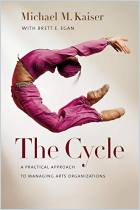
Do Big Banks Have Lower Operating Costs?
Economic Policy Review. Special Issue: Large and Complex Banks
Read or listen offline
Recommendation
In an era of systemically important financial institutions, some US banks are now “too big to fail” and perhaps “too big to jail.” The debate continues as to whether the largest banks enjoy unfair competitive and cost advantages relative to their smaller brethren, especially due to market perceptions of a government guarantee. Federal Reserve Bank of New York researchers Anna Kovner, James Vickery and Lily Zhou find that constraining bank size could result in unintended higher costs for the economy and consumers. getAbstract recommends this illuminating paper to financial institution executives, policy makers and analysts for its insights into the pluses and minuses of big banking.
Take-Aways
About the Authors
Anna Kovner is a research officer at the Federal Reserve Bank of New York, where James Vickery is a senior economist and Lily Zhou is a senior research analyst.
















Comment on this summary or Start Discussion